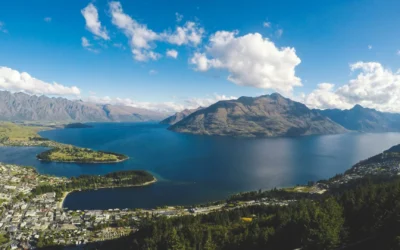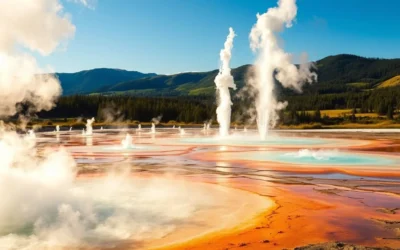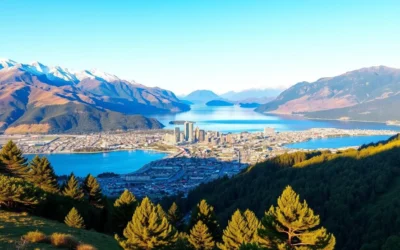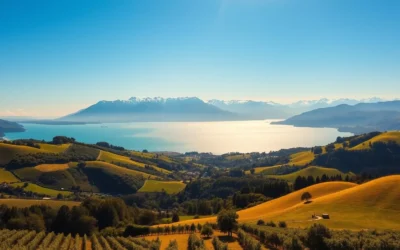✓ Accommodations ✓ Flights ✓ Rental Cars ✓ Tours & Activities
New Zealand is a vibrant tapestry of cultures, reflected in its diverse linguistic landscape. English dominates as the primary language, spoken by over 95% of the population with conversational fluency. This makes it the most widely used language across the country.
Te Reo Māori, the indigenous language, holds a special place in the nation’s identity. It is spoken by nearly 186,000 people, representing about 4% of the population. Efforts to revive and preserve Māori have been ongoing since the 1980s, contributing to its growth.
Other languages like Samoan, Mandarin, and Hindi also play significant roles, enriching the cultural mosaic. For instance, Samoan is spoken by over 100,000 individuals, while Mandarin and Hindi are spoken by 95,000 and 69,000 people, respectively.
This linguistic diversity highlights the multicultural essence of New Zealand, making it a fascinating place to explore language and culture.
Understanding New Zealand’s Linguistic Landscape
Migration has played a key role in creating a multilingual society. The population’s varied backgrounds contribute to a unique linguistic mix. Over 160 languages are spoken here, reflecting the cultural mosaic shaped by diverse communities.
Exploring the Cultural Mosaic
Historical and recent migration have significantly influenced language use. For example, Samoan is spoken by over 100,000 people, while Mandarin and Hindi are also widely used. This diversity highlights the multicultural essence of the nation.
Indigenous languages like Te Reo Māori hold a special place. Efforts to revive and preserve Māori have been ongoing since the 1980s, contributing to its growth. Additionally, New Zealand Sign Language (NZSL) is used by approximately 23,000 people, with around 5,000 relying on it for daily communication.
The Impact of Global Migration
Global migration has enriched the linguistic landscape. Communities from Asia, the Pacific, and Europe have brought their languages, creating a vibrant cultural scenario. For instance, Mandarin is spoken by 95,000 people, while Hindi is used by 69,000.
Here’s a breakdown of the most common languages spoken:
| Language | Number of Speakers |
|---|---|
| English | Over 95% of the population |
| Te Reo Māori | 186,000 |
| Samoan | 100,000+ |
| Mandarin | 95,000 |
| Hindi | 69,000 |
This linguistic diversity showcases the nation’s multicultural identity. It’s a testament to how global migration shapes societies and enriches cultural heritage.
The Official Languages of New Zealand
Three languages hold official status, each playing a unique role in society. English dominates as the de facto national tongue, while Te Reo Māori and New Zealand Sign Language (NZSL) are formally recognized and protected.
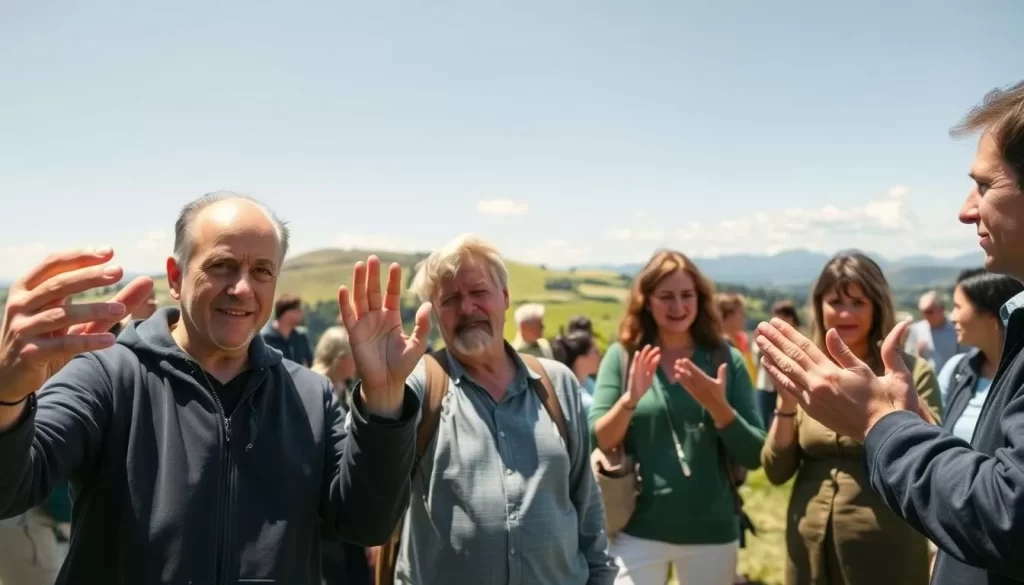
English: The De Facto National Tongue
English is the most widely spoken language, with over 95% of the population conversing fluently. Its dominance stems from historical influences, including the Education Ordinance of 1847, which established English as the primary language in schools.
Today, English is the default language for education, business, and daily communication. Its universal usage makes it the backbone of societal interaction.
Te Reo Māori and New Zealand Sign Language
Te Reo Māori, the indigenous language, is spoken by 4% of the population. Efforts to revive it began in the 1980s, culminating in the Māori Language Act of 1987. This act recognized Māori as a “taonga” (treasure) and established the Māori Language Commission.
NZSL, used by 0.5% of the population, gained official status in 2006. The NZSL Act ensures access to interpreters in courts and promotes its visibility.
Here’s a quick overview of the three official languages:
- English: Nearly universal usage, dominant in all sectors.
- Te Reo Māori: Revived through legislative support, a cultural treasure.
- NZSL: Officially recognized, ensuring accessibility for the deaf community.
These languages reflect a balance between tradition and modernity, supported by robust legislation and cultural pride.
New Zealand: Official and widely spoken languages
The linguistic diversity of this island nation reflects its rich cultural heritage. English dominates as the primary official language, spoken by over 95% of the population with conversational fluency. Its universal usage makes it the backbone of daily communication.
Te Reo Māori, the indigenous tongue, holds a special place despite having fewer speakers. Around 186,000 people, or 3.96% of the population, speak it. Efforts to revive reo māori have been ongoing, supported by the Māori Language Act of 1987.
New Zealand Sign Language (NZSL) is another official language, used by approximately 23,000 people. Recognized in 2006, it ensures accessibility for the deaf community and promotes inclusivity.
Here’s a quick look at the most spoken languages:
- English: Nearly universal, dominant in all sectors.
- Te Reo Māori: A cultural treasure, revived through legislative support.
- NZSL: Officially recognized, ensuring accessibility.
These languages showcase the balance between tradition and modernity. Official recognition plays a key role in preserving this linguistic heritage for future generations.
Historical Development of Language in New Zealand
The linguistic history of this nation is deeply intertwined with its cultural evolution. From early settlements to modern revitalization efforts, language has played a pivotal role in shaping identity. Let’s explore how historical events transformed the linguistic landscape.
Colonial Influences and Early Settlements
European colonization in the 19th century marked a turning point. English settlers arrived, bringing their language and customs. Over time, English became dominant, while Te Reo Māori faced significant decline.
Early settlers viewed Māori as inferior, discouraging its use. Children were often punished for speaking it, leading to a sharp decrease in native speakers. By the mid-20th century, Māori was at risk of being lost entirely.
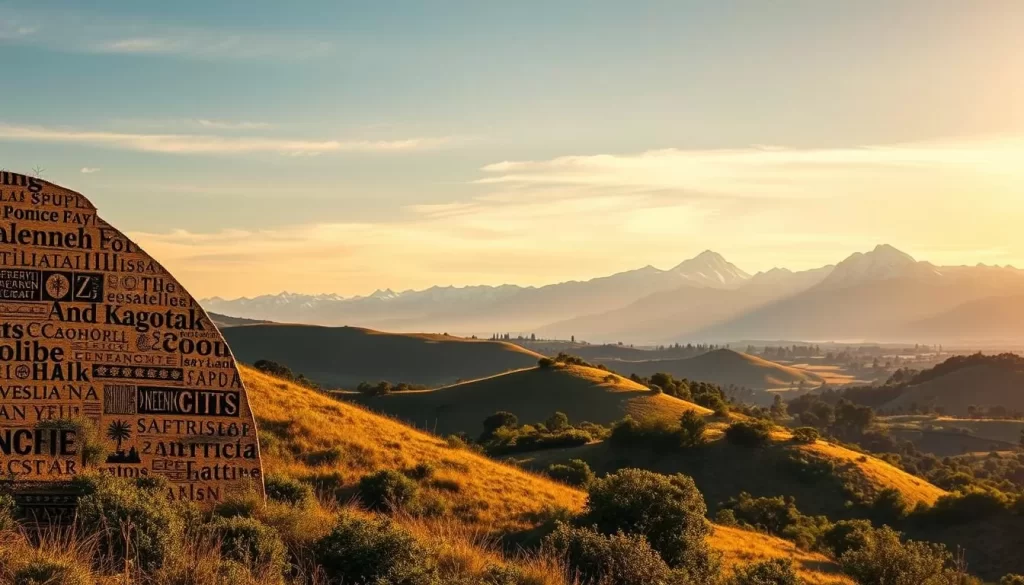
The Revival of Te Reo Māori
In the 1970s, a cultural resurgence began. Māori communities started reclaiming their identity and language. This movement gained momentum, supported by the government and local groups.
The Māori Language Act of 1987 was a landmark moment. It recognized Te Reo Māori as a “taonga” (treasure) and established the Māori Language Commission. Today, initiatives like Tamaki Māori Village continue to promote its daily use.
Here’s a summary of key milestones in the revival of Te Reo Māori:
| Year | Event |
|---|---|
| 1814 | First transcription of Te Reo Māori by European missionaries. |
| 1987 | Māori Language Act passed, recognizing it as an official language. |
| 2006 | New Zealand Sign Language gained official status. |
The place of Te Reo Māori in society has been restored through collective efforts. Its revival is a testament to the resilience of cultural heritage and the power of community action.
Current Language Trends and Census Data
Language trends in this island nation reveal a fascinating shift over the years. Census data highlights both stability and change in how people communicate. English remains dominant, but other languages are gaining ground.
Statistics on English and Māori Speakers
English is spoken by 95.37% of the population, showing a slight decline over time. This drop reflects the growing diversity of the nation. Te Reo Māori, the indigenous language, is spoken by 3.96% of people, a small but steady figure.
Efforts to revive Māori have made an impact. The percentage of speakers has remained stable, thanks to cultural initiatives. This balance between tradition and modernity is a key feature of the linguistic landscape.
Growth in International and Minority Languages
International languages are on the rise. Samoan, Chinese, and Hindi speakers have increased significantly in recent years. For example, Samoan is now spoken by 2.17% of the population, while Chinese and Hindi are spoken by 4.42% and 1.48%, respectively.
This growth reflects the impact of global migration. Communities from Asia and the Pacific have brought their languages, enriching the cultural fabric. The diversity of languages spoken today is a testament to this dynamic evolution.
| Language | Percentage of Speakers |
|---|---|
| English | 95.37% |
| Te Reo Māori | 3.96% |
| Samoan | 2.17% |
| Chinese | 4.42% |
| Hindi | 1.48% |
These trends show how language use has evolved over time. The growing presence of international and minority languages highlights the nation’s multicultural identity. Understanding these changes helps you appreciate the richness of its linguistic heritage.
Diversity Through Immigration and Minority Languages
The cultural fabric of this country is woven with threads of diverse languages brought by immigrants. Over the years, communities from Asia, the Pacific, and beyond have contributed to a vibrant linguistic landscape. This section explores how immigration has shaped the language new zealand scene and highlights the significance of minority languages.

Samoan, Hindi, and Northern Chinese Communities
Samoan is one of the most prominent minority languages, spoken by over 100,000 people. It reflects the strong Pacific Islander presence, particularly in urban centers like Auckland. Hindi, spoken by 69,000 individuals, showcases the growing South Asian community. Northern Chinese dialects, including Mandarin, are also on the rise, with 95,000 speakers.
These communities have not only enriched the new zealand english environment but also fostered cultural exchange. Festivals, culinary traditions, and community events celebrate these languages, making them an integral part of daily life.
International Language Contributions
Global migration has introduced a host of languages, adding depth to the country’s identity. For instance, Mandarin is now the third most spoken language, reflecting the influence of Chinese immigrants. Similarly, Hindi and Samoan have become vital components of the linguistic mosaic.
These contributions go beyond communication. They enhance cultural understanding and create opportunities for international trade and collaboration. As research shows, immigrants’ linguistic skills play a key role in economic growth and urban development.
Understanding these trends helps you appreciate the evolving identity of this country. The rise of minority languages is a testament to the power of immigration in shaping societies.
Regional Language Variations Across New Zealand
Language use across regions varies significantly, shaped by local culture and education. While English dominates nationwide, urban and rural areas show distinct patterns. Understanding these differences helps you appreciate the diversity of spoken new zealand languages.
Urban Versus Rural Language Use
In cities like Auckland, bilingual signage is common, reflecting the multicultural population. Samoan is the second most spoken language here, with over 100,000 speakers. In contrast, rural areas often rely on English, with fewer minority language speakers.
Education plays a key role in shaping these patterns. Urban schools often offer programs in Te Reo Māori and other languages, fostering bilingualism. Rural schools, however, may focus more on zealand english due to limited resources.
Regional disparities are evident in census data. For example, Wellington has a higher prevalence of French speakers, while Ashburton’s second most spoken language is Tagalog. These variations highlight how location influences daily language encounters.
| Region | Second Most Spoken Language |
|---|---|
| Auckland | Samoan |
| Wellington | French |
| Ashburton | Tagalog |
These trends show how education and community initiatives shape language use. Whether you’re in an urban center or a rural town, the languages you encounter reflect the unique cultural fabric of the region. For more insights, explore the linguistic landscape of New Zealand.
Practical Language Tips for Visitors
Exploring the local language can make your visit more immersive and enjoyable. Understanding common phrases and nuances will help you connect with locals and navigate daily interactions smoothly. Whether you’re in a bustling city or a quiet town, these tips will enhance your experience.
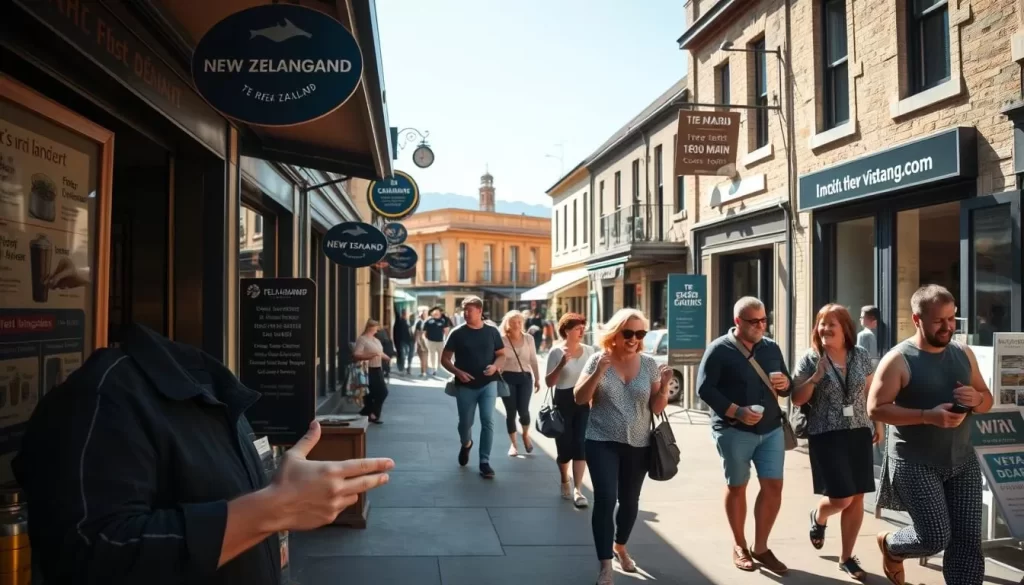
Embracing Kiwi Phrases and Local Expressions
Learning a few Kiwi phrases can go a long way. For example, “kia ora” is a versatile greeting meaning “hello” or “thank you.” It’s widely used and shows respect for the indigenous culture. Another common term is “jandals,” which refers to flip-flops. These small details can make your conversations feel more natural.
Other expressions like “bach” (a holiday home) and “chilly bin” (a cooler) are part of everyday vocabulary. Using these words can help you blend in and understand local conversations better. For more detailed examples, check out this essential guide to speaking like a.
Understanding New Zealand English Nuances
While English is the dominant language, it has unique characteristics here. Pronunciation and slang might differ from what you’re used to. For instance, the word “deck” often refers to a patio, and “sweet as” means “no problem” or “cool.”
Schools and public spaces often use these terms, so being familiar with them can make your visit more comfortable. According to the new zealand census, over 95% of the population speaks English, but understanding these local quirks will set you apart.
By embracing these tips, you’ll not only communicate effectively but also gain a deeper appreciation for the culture. Whether you’re chatting with locals or exploring school programs, these insights will make your trip unforgettable.
The Role of Education and Government in Language Preservation
Education and government policies play a pivotal role in preserving the linguistic heritage of this culturally rich nation. Through legislation and community programs, efforts are made to protect and promote both indigenous and minority languages. This ensures that cultural identities remain vibrant and accessible to future generations.
Language Policy and Legislation
Government initiatives, such as the Māori Language Act and the NZSL Act, have been instrumental in safeguarding linguistic diversity. These laws recognize the importance of indigenous languages and provide frameworks for their revitalization. For example, the Māori Language Act of 1987 established the Māori Language Commission, ensuring that Te Reo Māori is taught in schools and used in public spaces.
Such policies create a supportive area for cultural expression. They also ensure that minority languages are not overshadowed by dominant ones. This balance is crucial for maintaining a diverse linguistic landscape.
Initiatives in Schools and Community Programs
Schools play a vital role in language preservation. Programs that teach Te Reo Māori and New Zealand Sign Language (NZSL) help students connect with their heritage. For instance, immersion schools have seen a rise in fluent speakers, demonstrating the effectiveness of these initiatives.
Community programs also contribute significantly. Local events, workshops, and media outlets promote the use of minority languages, fostering a sense of pride and belonging. These efforts are supported by census data, which shows a steady increase in the number of speakers.
By combining educational and governmental efforts, this nation ensures that its linguistic heritage remains alive. For more insights, explore the linguistic landscape of New Zealand.
Conclusion
The linguistic diversity of this nation is a testament to its rich cultural heritage and global connections. Over 160 languages are spoken here, creating a vibrant community that reflects its multicultural identity. From Te Reo Māori to Samoan and Mandarin, each language plays a vital role in shaping the cultural home of its people.
As the community grows, questions arise about the future of language use. Will bilingual education continue to thrive? How can efforts to preserve indigenous languages be sustained? These are critical questions that highlight the importance of ongoing support for linguistic diversity.
Understanding the linguistic landscape of New Zealand offers insights into how language influences identity and global connections. By embracing this diversity, the nation ensures its cultural heritage remains alive for future generations.
The above is subject to change.
Check back often to TRAVEL.COM for the latest travel tips and deals.
Here are some Tours & Sightseeing suggestions that might pique your interests!

